 April 7, 2016 John E. Ross, KD8IDJ, Editor
| |||||||||
A New "ARRL The Doctor is In" Audio Podcast Episode is Now Available "HF Vertical Antennas" will be the topic of the inaugural "ARRL The Doctor is In" audio podcast, available on April 7 and sponsored by DX Every 2 weeks your host, QST Editor in Chief Steve Ford, WB8IMY, and the Doctor himself, Joel Hallas, W1ZR, will discuss a broad range of technical topics. You can e-mail your questions to doctor@arrl.org, and they may be answered in a future podcast. Enjoy "ARRL The Doctor is In" on Apple iTunes, or by using your iPhone or iPad podcast app (just search for "ARRL The Doctor is In"). You can also listen online through Stitcher and through the free Stitcher app for iOS, Kindle, or Android devices. Subscribe to the podcast free of charge through either service and never miss an episode. Podcast episodes will be archived on the ARRL website. World Amateur Radio Day 2016 Will Celebrate Amateur Radio's Contribution to Society World Amateur Radio Day (WARD), observed every April 18, marks the founding of the International Amateur Radio Union (IARU) in 1925. As they do every year, radio amateurs worldwide will take to the airwaves to celebrate Amateur Radio's contribution to society.
Amateur Radio experimenters were the first to discover that -- far from being a wasteland -- the shortwave spectrum could support worldwide propagation. In the rush to use these shorter wavelengths, Amateur Radio was "in grave danger of being pushed aside," the IARU's history has noted. Amateur Radio pioneers -- ARRL co-founder Hiram Percy Maxim, 1AW, among them -- met in Paris in 1925 and created the IARU to support Amateur Radio worldwide. As Maxim and his counterparts envisioned, the IARU is an international confederation of national Amateur Radio organizations that allows a forum for common matters of concern and collectively represents matters to the International Telecommunication Union (ITU). Just 2 years later, at the International Radiotelegraph Conference, Amateur Radio gained several allocations still recognized today -- 160, 80, 40, 20, and 10 meters. Since its founding, the IARU has worked to defend and expand the frequency allocations for Amateur Radio.
Today, Amateur Radio is more popular than ever, with over 3,000,000 licensed operators! The IARU has provided a World Amateur Radio Day poster. Any club may download it to promote WARD. The poster comes in two sizes (61cm x 91cm) (small (A4) flyer). Groups should promote their WARD activity on social media by using the hash tag #WARD2016 on Twitter and on Facebook. The IARU will list all WARD activities (scroll below the announcement). To have your WARD activity listed, e-mail ARRL Media and Public Relations Manager Sean Kutzko, KX9X. Read more. ARRL MF Experiment Coordinator Sees Ongoing Research Role After Hams Gain 472-479 kHz The coordinator of the 600 Meter Experimental Group, Fritz Raab, W1FR, said this week that he sees an ongoing role for medium frequency (MF) experimentation, even after Amateur Radio gains access to the new 630 meter band (472-479 kHz). An FCC Report and
Order authorizing Amateur Radio access to 2200 meters (135.7-137.8 kHz) and 630 meters is expected to be released soon. In his 1st quarter report for 2016 on the WD2XSH Experimental license work, Raab said that once the new ham band is in place, he expects ARRL experiment participants to pursue work in that part of the spectrum under their Amateur Radio licenses. But he said that more MF research remains, and he would recommend continuing work under the WD2XSH Experimental a while longer, shifting focus to 461 to 472 kHz. "This will clear the amateur frequencies, while allowing the experimenters to run unattended propagation beacons without using the limited bandwidth that will be available to amateurs." The WD2XSH Part 5 Experimental license does not expire until 2020. A substantial community of Amateur Radio operators already conduct experiments using their own FCC Part 5 licenses in the low frequency (LF) and MF spectrum, in addition to the WD2XSH experiment. Raab this week suggested several possibilities for expanded experimental work in the vicinity of 630 meters without cluttering the limited 7 kHz of spectrum in the soon-to-be-authorized amateur band. Among other things, he envisions work using wider-bandwidth modulation protocols, the use of higher power than the 1 W EIRP expected to be authorized for the new ham band, and commemorative transmissions. "Eventually, this operation might show that the amateur allocation could be expanded or allowed to use more power," Raab said. Read more. National Parks on the Air Update Thanks to the ARRL IT Department, there are now daily updates to the National Parks on the Air (NPOTA) activity statistics. The new statistics are listed There are 47 Activations on the NPOTA calendar for April 7-13, including Cesar Chavez National Monument in California, and Pictured Rocks National Lakeshore in Michigan. Details about these and other upcoming activations can be found on the NPOTA Activations calendar. Keep up with the latest NPOTA news on Facebook. Follow NPOTA onTwitter (@ARRL_NPOTA). Author, TV Reporter are the 2015 ARRL Bill Leonard, W2SKE, Award Recipients Author Don Keith, N4KC, and TV reporter and anchor Jackie Lukas are the recipients of the 2015 ARRL Bill Leonard, W2SKE, Award. Keith was recognized for an article on Amateur Radio, "Wave of Popularity," that he contributed to American Legion magazine. Lukas, a reporter and anchor for News 12 Long Island in New York, was honored for reporting the Great South Bay Amateur Radio Club's activation of a lighthouse "in an uplifting and positive manner." The ARRL Board of Directors named Keith and Lukas in January to receive the award.
The ARRL Bill Leonard Award honors up to three professional journalists each year for outstanding coverage highlighting the enjoyment, importance, and public service value the Amateur Radio Service has to offer. The award is a tribute to the late CBS News President Bill Leonard, W2SKE, an avid Amateur Radio operator and advocate. Each recipient will receive an engraved plaque, and a $250 contribution will be made in each recipient's name to the charity of their choice. "I look forward to receiving the plaque and am very humbled by the award," Keith reacted. He expects to attend a formal presentation at the Huntsville Hamfest in August. Keith said the American Legion's national Amateur Radio club (K9TAL) is working to reach members who might be interested in Amateur Radio and "especially its public service aspects." Keith has designated the Amateur Radio Advancement Group, which is affiliated with the Birmingham Amateur Radio Club, to be the beneficiary of his award. Keith is the author or co-author of more than 30 books.
Lukas responded, "Thank you so much! It's such an honor. I'm glad you enjoyed my story just as much as I enjoyed covering it!" Lukas received the Leonard Award plaque at the March meeting of the Great South Bay Amateur Radio Club. ARRL Media and Public Relations Manager Sean Kutzko, KX9X, praised the efforts of media professionals who report on Amateur Radio activities. "We owe a lot to the journalists who highlight Amateur Radio's capabilities to our communities and our country," he said. "When Amateur Radio provides communication for a natural disaster or school contact with astronauts on the International Space Station, and the media covers that service, more and more people become aware just how much of a resource we are. The ARRL Leonard Award is our way of saying, 'Thank you for telling our story.'" MicroHAMS Digital Conference Showcases Innovative Applications, Hardware Each March in the heart of the Pacific Northwest's software capital, the MicroHAMS club hosts the annual MicroHAMS Digital Conference (MHDC). Having expanded beyond being Microsoft's radio club, MicroHAMS now boasts members from all around the Puget Sound area, including a lot of digital innovators. This year's conference was booked solid.
"I always come away from this conference energized and full of ideas about ways to put digital technology to work for ham radio," said ARRL Contributing Editor Ward Silver, N0AX, who was a presenter at MHDC 2016. "This year was no different as the presenters focused on SDR and related technologies, including networking and fully digital radios." A challenging application of digital ham radio is to provide seamless race-day coverage of the RAMROD (Ride Around Mount Rainier in One Day) bicycle race. Curt Black, WR5J, described the perils of attempting data links around a 14,000-foot mountain surrounded by dense fir and hemlock forests, over a 150-mile race course with 10,000 feet of elevation changes. It's not easy, but they do it and have bigger plans for 2016. The technology involves everything from 80 meter NVIS to 900 MHz RFID and D-RATS over the D-STAR system. John Petrich, W7FU, is taking SDR into the UHF-microwave transceiver world with a design using the Ettus Research USRP B200 SDR and the GNU Radio Companion software platforms. The radio covers from 70 MHz to 6 GHz without converters and is an excellent "workbench" for someone interested in getting into SDR/DSP technology. Alex Schwartz, VE7DSW, described his LiF/BiLiF adapter boards that use a conventional transceiver's IF to create a fully functional spectrum scope. "It's a particularly sweet combination with the FT-817 and can perform just about any type of modulation and demodulation you can think of," Silver commented. Two fully digital radios in late prototype stages also were shown. The HamShield by Morgan Redfield, KG7OGM, and Casey Halverson, KC7IBT, is a 144/222/432 MHz handheld based on the Arduino. The project was funded through Kickstarter, and the presentation was as much about the trials and triumphs of funding development as it was technical. Local company Northwest Digital Radio's Universal Digital Radio UDRX is in pilot production after a long development and will have product available at Dayton Hamvention®. The 440 MHz transceiver is built to handle a wide variety of digital protocols and modulation types.
Following the ham radio presentations, Phil Horkin, AF7GY, gave a fascinating explanation of how MIMO (multiple input, multiple output) technology works. MIMO is commonly applied in the wireless data industry, in such devices as WiFi routers. MIMO depends on the presence of multipath propagation to work. Implementing it over line-of-sight links is the challenge, and Horkin is at the forefront of figuring out how to do just that, increasing a channel's throughput considerably without consuming more bandwidth. Silver said his own presentation discussed the changes ahead for ham radio, as new technology and new hams come aboard, taking Ham Radio 1.0 to Ham Radio 2.0. "It will be different, but not unrecognizable, as hams carry the fundamentals forward into the second century of Amateur Radio," he predicted. "For radio amateurs, digital conferences such as this one offer opportunities to discover technology that is opening up little-used bands and achieving communication capabilities that were science fiction not long ago," Silver observed. "The pace and breadth of development remind me of how packet radio and commercial wireless data developed with considerable overlap in the 1980s, a partnership that continues to pay dividends today." Presentations are available on the MHDC website. -- Thanks to Ward Silver, N0AX "Cows Over the World DXpedition" Set to Get Under Way Tom Callas, KC0W, has all of his bovines in a row to begin his "Cows Over the World DXpedition" to several DXCC entities in the Pacific and Asia this month, several months earlier than initially announced. All call signs will include a "COW" suffix. American Samoa will be the starting "Running down the center of American Samoa is an 800 meter (approximately 2600 feet) tall mountain, which should greatly attenuate my CW signal to Europe and Asia," he told The Daily DX. This location should favor North and South America, however. After completing operations on the east side of the island, KC0W will move to the west side to accommodate European and Asian DXers. He has estimated that he will operate "for a month or two" from the east side of the island. "Europe and Asia, don't get frustrated if you can't hear me when I'm operating from the east side of the island. Your time will come," he said on his QRZ.com profile.
Callas has no set time frame to operate from each entity. "The determining factor will be: When the pileups die down, it's time to pack everything up and move along," he said. Although his emphasis will be on 160, 80, and 40 meters, KC0W plans to be active on 160 through 6 meters, running 500 W to vertical antennas over salt water. He expects to participate in "all major CW contests." His DX travels to the other venues are still on track. These include Samoa, Tokelau, Solomon Islands, Temotu Province, and Bangladesh. He said he's spent months researching the absolute best DXing sites at each location. Callas stressed that he will only be operating CW. "No microphones have been brought along," he pointed out. He's financing the round-robin DXpedition out of his own pocket. Read more. -- Thanks to The Daily DX for some information Hurricane Watch Net Seeks Net Control Operators The Hurricane Watch Net (HWN) is looking for additional net control operators. Hurricane Season in the Atlantic begins on June 1 and ends on November 30; in the Eastern Pacific, it begins on May 15 and ends on November 30. Hurricanes can form at any time of the year, however, as witnessed by Hurricane Alex in January.
Graves said the HWN is always on the lookout for well-qualified, experienced net control operators who can effectively communicate with hurricane-prone areas from eastern Canada, the US East Coast, the Gulf of Mexico, Central America, and the Caribbean. He said bilingual (English and Spanish) operators are a valuable asset. Visit the HWN Membership Information Page, if you're interested in becoming a member of the Hurricane Watch Net. Read more. Ohio SEC Expanding "NVIS Antenna Day" Activity this Year ARRL Ohio Section Emergency Coordinator Stan Broadway, N8BHL, says he has expanded participation in his section's "NVIS Antenna Day" on Saturday, April 23, by inviting stations in neighboring states to participate. This year's activity also will introduce the "anchor stations" concept, to provide more consistent signal reports. The Near-Vertical Incidence Skywave or NVIS antenna has gained traction among emergency communication groups and others desiring a close-in radiation pattern for regional work on HF.
"Working with antennas has been an integral part of Amateur Radio since the first hams took to the airwaves," Broadway said. "Having the 'right' antenna becomes even more important when we're acting in the interest of public safety." Sponsored by Ohio ARES, NVIS Antenna Day will get under way at 1500 UTC on April 23, when teams will start making contacts to compare antennas. "We don't have an ending time, because some stations had so much fun -- and so many pileups -- last year that that they went on for quite a while past dark," Broadway recounted.
Broadways said several stations in surrounding states plan to be active in this year's NVIS Day. "We've also received word a group in Texas will be doing their own NVIS exercise along with ours," he added. "So, it looks like 40 meters will be busy with test signals!" Broadway said NVIS Antenna Day is not a contest but an activity focused on having teams or individuals research and determine the NVIS antenna designs they believe will work the best -- then build and test them on the air. "The differences [among competing NVIS antennas] last year weren't as dramatic as one might expect. Those fashioned after the military AS-2259 cross-dipole configuration appeared to be the best, but other designs worked nearly as well," Broadway pointed out. "We do understand that 'regular' antennas work well also -- a lot has to do with band conditions." Read more. In Brief...
. . . . . .
The K7RA Solar Update Tad Cook, K7RA, Seattle, reports: All solar and geomagnetic indicators declined again last week. Compared to the previous 7 days, from March 31 through April 6 the average daily sunspot number slipped from 28.1 to 19.4. Average daily solar flux sank from 88.8 to 83.1, while average daily planetary A index declined from 11.9 to 9.4. The average daily mid-latitude A index went to 7.6 from 8.6.
Predicted planetary A index is 14, 12, and 8 on April 7-9; 5 on April 10-11; 12, 20, 15, and 8 on April 12-15; 5 on April 16-20; 8 on April 21-22; 5 and 12 on April 23-24; 10 on April 25-26; 8 on April 27; 5 on April 28-29; 22, 8, 15, and 12 on April 30-May 3, and 8 on May 4-5. The big factor in bringing the week's average sunspot number down by nearly 9 points was the fact that the daily sunspot number was 11 on March 31 through April 2. A sunspot number of 11 is the lowest we can possibly observe, outside of no sunspots (then the sunspot number is zero). Each sunspot group counts as 10 points, and these are added to the total number of sunspots, so a sunspot number of 11 means that just one sunspot is visible. Spaceweather.com reported that on April 7, Earth is expected to cross a fold in the Heliospheric Current Sheet, which could trigger unsettled geomagnetic conditions. The Heliospheric Current Sheet separates regions of solar wind where the magnetic field points toward or away from the sun. See an animation of this effect from 2001 until 2009. Sunspot numbers for March 31 through April 6 were 11, 11, 11, 38, 23, 27, and 13, with a mean of 19.1. The 10.7 centimeter flux was 81.7, 82.1, 81.5, 82.3, 83.4, 83.4, and 87.1, with a mean of 83.1. Estimated planetary A indices were 7, 3, 22, 15, 7, 5, and 7, with a mean of 9.4. Estimated mid-latitude A indices were 5, 2, 15, 13, 6, 5, and 7, with a mean of 7.6. Send me your reports and observations! This Week in Radiosport
See the ARRL Contest Calendar for more information. For in-depth reporting on Amateur Radio contesting, subscribe to The ARRL Contest Update via your ARRL member profile e-mail preferences. Upcoming ARRL Section, State, and Division Conventions and Events
Find conventions and hamfests in your area.
. .
Subscribe to...
Free of charge to ARRL members...
| |||||||||
.jpg) Engineering
Engineering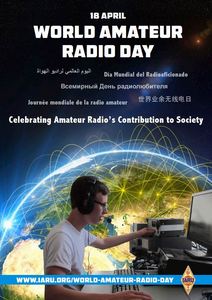 "April 18 is the day for all of Amateur Radio to celebrate and tell the world about the science we can help teach, the community service we can provide, and the fun we have," the IARU said in announcing World Amateur Radio Day 2016. "We hope you will join in the fun and education that is World Amateur Radio Day!"
"April 18 is the day for all of Amateur Radio to celebrate and tell the world about the science we can help teach, the community service we can provide, and the fun we have," the IARU said in announcing World Amateur Radio Day 2016. "We hope you will join in the fun and education that is World Amateur Radio Day!"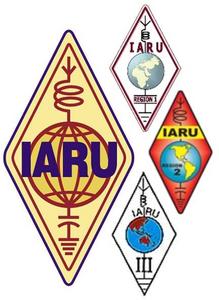 From the 25 countries that formed the IARU in 1925, the IARU has grown to include 160 member-societies in three regions. IARU Region 1 includes Europe, Africa, the Middle East, and Northern Asia. Region 2 covers the Americas, and Region 3 is comprised of Australia, New Zealand, the Pacific island nations, and most of Asia. The ITU has recognized the IARU as representing the interests of Amateur Radio.
From the 25 countries that formed the IARU in 1925, the IARU has grown to include 160 member-societies in three regions. IARU Region 1 includes Europe, Africa, the Middle East, and Northern Asia. Region 2 covers the Americas, and Region 3 is comprised of Australia, New Zealand, the Pacific island nations, and most of Asia. The ITU has recognized the IARU as representing the interests of Amateur Radio..jpg)
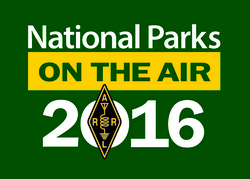 on the NPOTA Leader board page. There, you can find info on the number of parks activated, total number of NPOTA activations, and number of QSOs per NPOTA unit. As of April 6, more than 240,000 NPOTA contacts had been confirmed in Logbook of the World, from nearly 3400 activations since January 1. The California National Historic Trail has hosted 4115 QSOs, more than any other NPOTA unit.
on the NPOTA Leader board page. There, you can find info on the number of parks activated, total number of NPOTA activations, and number of QSOs per NPOTA unit. As of April 6, more than 240,000 NPOTA contacts had been confirmed in Logbook of the World, from nearly 3400 activations since January 1. The California National Historic Trail has hosted 4115 QSOs, more than any other NPOTA unit.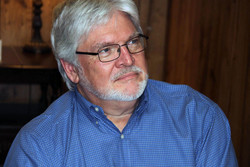
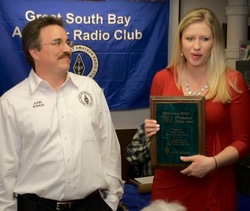
.jpg)
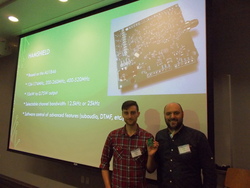
 point for his all-CW adventure. The Minnesota DXer will operate as KH8/KC0W beginning on or about April 12. At the outset of his stay on Tutuila Island (OC-045), Callas will be on a beach near Pago Pago on the east side of the island.
point for his all-CW adventure. The Minnesota DXer will operate as KH8/KC0W beginning on or about April 12. At the outset of his stay on Tutuila Island (OC-045), Callas will be on a beach near Pago Pago on the east side of the island.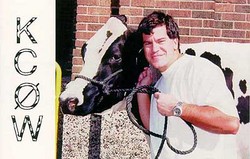
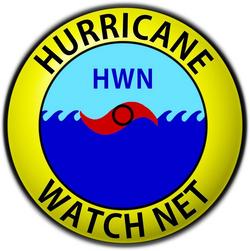 "With the 2016 hurricane season rapidly approaching, the Hurricane Watch Net is preparing for what looks to be an active season," HWN Manager Bobby Graves, KB5HAV, said. "It has been a long time since the US has seen a major hurricane make landfall." He believes the US may be overdue for one.
"With the 2016 hurricane season rapidly approaching, the Hurricane Watch Net is preparing for what looks to be an active season," HWN Manager Bobby Graves, KB5HAV, said. "It has been a long time since the US has seen a major hurricane make landfall." He believes the US may be overdue for one.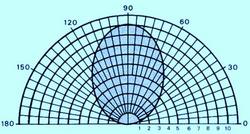
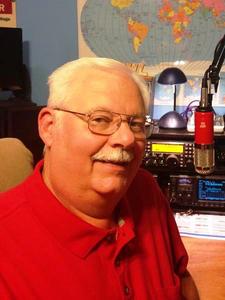
 ARRL Establishes "Youth Nets" Web Page: The new "
ARRL Establishes "Youth Nets" Web Page: The new "%20Gandy%20KS6FO.JPG) Rose A. "Uti" Gandy, KS6FO, SK: Rose "Uti" Gandy, of Pago Pago, American Samoa, died on March 25. She was 69 and had been an ARRL member. Uti Gandy was the widow of the prominent contester and DXer Larry Gandy, AH8LG (SK). Uti Gandy helped with the Swains Island DXpeditions and hosted the W1AW/KH8 operations during the ARRL Centennial. A service was set for April 7.
Rose A. "Uti" Gandy, KS6FO, SK: Rose "Uti" Gandy, of Pago Pago, American Samoa, died on March 25. She was 69 and had been an ARRL member. Uti Gandy was the widow of the prominent contester and DXer Larry Gandy, AH8LG (SK). Uti Gandy helped with the Swains Island DXpeditions and hosted the W1AW/KH8 operations during the ARRL Centennial. A service was set for April 7. Voice of America Antenna Farm in North Carolina Leveled: A field of 48 antenna towers that the Voice of America (VOA) once used to broadcast around the world, was dropped by explosives on April 4. The VOA had not used the towers, located in Beaufort County, North Carolina, for 10 years, although it still broadcasts news and information to Latin America, Cuba, the Caribbean, and Africa from antennas in a nearby county. According to news reports, it took less than 1 minute to fell the towers, which were hauled away as scrap. Television station WITN said the VOA site has been sold to the North Carolina Wildlife Resources Commission for conservation. See the towers go down in this WITN TV
Voice of America Antenna Farm in North Carolina Leveled: A field of 48 antenna towers that the Voice of America (VOA) once used to broadcast around the world, was dropped by explosives on April 4. The VOA had not used the towers, located in Beaufort County, North Carolina, for 10 years, although it still broadcasts news and information to Latin America, Cuba, the Caribbean, and Africa from antennas in a nearby county. According to news reports, it took less than 1 minute to fell the towers, which were hauled away as scrap. Television station WITN said the VOA site has been sold to the North Carolina Wildlife Resources Commission for conservation. See the towers go down in this WITN TV 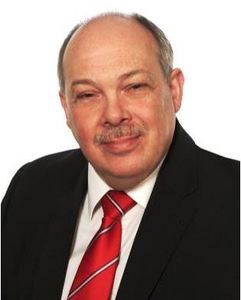 Steve Thomas, M1ACB, is New Radio Society of Great Britain General Manager: Steve Thomas, M1ACB, has been appointed as the new general manager of the Radio Society of Great Britain (
Steve Thomas, M1ACB, is New Radio Society of Great Britain General Manager: Steve Thomas, M1ACB, has been appointed as the new general manager of the Radio Society of Great Britain ( UK to Sell Off 750 MHz of Radio Spectrum: UK Chancellor of the Exchequer George Osborne announced in the 2016 budget that 750 MHz of public sector radio spectrum would be "released" (auctioned). The Amateur Service in the UK currently shares significant spectrum with the public sector. "
UK to Sell Off 750 MHz of Radio Spectrum: UK Chancellor of the Exchequer George Osborne announced in the 2016 budget that 750 MHz of public sector radio spectrum would be "released" (auctioned). The Amateur Service in the UK currently shares significant spectrum with the public sector. "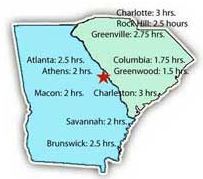

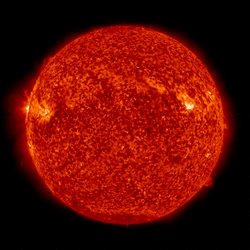 The April 6 prediction had solar flux at 90 and 92 on April 7-8; 95 on April 9-10; 93 and 91 on April 11-12; 90 on April 13-14; 80 on April 15; 78 on April 16-17; 80 on April 18-22; 78 on April 23; 80 on April 24-28; 82 on April 29-May 1; 78 on May 2-5; 82 on May 6-7, and 80 on May 8-12. Solar flux then continues to dither between 78 and 80 over the remainder of the 45-day forecast.
The April 6 prediction had solar flux at 90 and 92 on April 7-8; 95 on April 9-10; 93 and 91 on April 11-12; 90 on April 13-14; 80 on April 15; 78 on April 16-17; 80 on April 18-22; 78 on April 23; 80 on April 24-28; 82 on April 29-May 1; 78 on May 2-5; 82 on May 6-7, and 80 on May 8-12. Solar flux then continues to dither between 78 and 80 over the remainder of the 45-day forecast.







